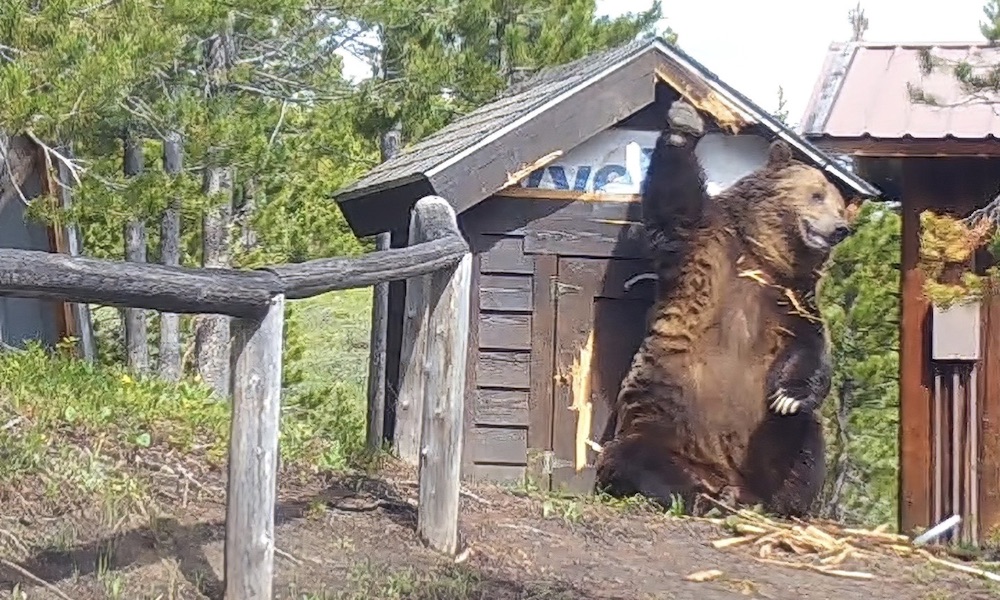A giant grizzly bear that claimed a Montana storage shed as its personal scratching post has apparently been persuaded to keep away.
The male grizzly bear in the top image is shown scent-marking a shed that stands nearly 6 feet tall.
Montana Fish, Wildlife & Parks explained Tuesday that the bear had been spotted on the same private property for years. It liked to mark the shed to communicate with other bears (note the giant paw print on the door).

FWP explained via Facebook:
“This generator shed contained no food attractants and was mostly empty. Bears are often curious about wood stains/oils/varnishes/shellacs and other outdoor treatments and will readily chew and rub on these treated woods.
“Once a scent post is created, other bears traveling in the area will rub in the same spot to make their presence known to other bears.”
Since this presented a danger to humans on and near the property, state biologists and the property owner teamed to construct an electric fence around the structure.

FWP stated: “The need for an electric fence on this structure is to prevent bears from being accustomed to and comfortable with rubbing on human structures, which can lead to them becoming more conflict-prone.
“Proactive measures, such as this one, teach bears to avoid human structures keeping people safe and reducing the need for management removal of bears.”
FWP had previously use the the image as part of a Facebook quiz that asked followers to guess whether this was a grizzly bear or black bear. But the answer was clear in the description’s wording:
“Here is a helpful hint: Grizzly bears are generally larger than black bears and may be bigger than a small shed. Also, they can be distinguished by longer, curved claws, humped shoulders, and a face that appears to be concave.”
